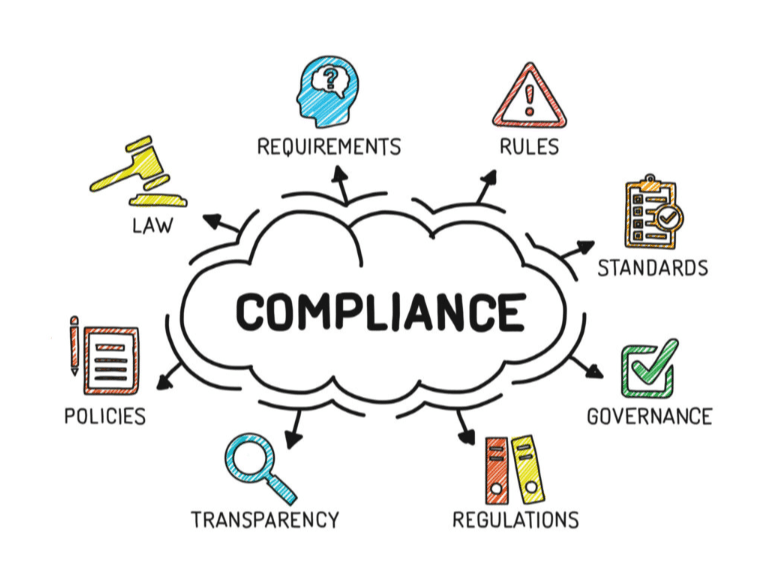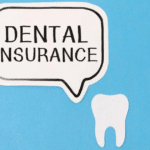Auto coverage insurance is a vital aspect of being a responsible vehicle owner. Whether you’re driving a brand-new car or an older model, having proper insurance is crucial for protecting your vehicle, finances, and well-being. Auto insurance is required by law in most places and can be one of the most significant purchases a car owner makes. It ensures that you are financially protected in the event of an accident, theft, or damage to your car.
Auto insurance can be complicated, with various options and coverage types available. Understanding the ins and outs of auto coverage insurance can help you make an informed decision that will safeguard you against unforeseen financial setbacks. This article will explore the types of auto coverage insurance, their benefits, the costs associated with them, and how to choose the right policy for your needs.
Key Takeaways
- Types of Coverage: Auto insurance includes liability, collision, comprehensive, PIP, and uninsured motorist coverage.
- Financial Protection: Insurance helps cover medical bills, vehicle repairs, and legal costs, providing financial security after an accident.
- Factors Affecting Costs: Vehicle type, location, driving history, and coverage levels all affect your premium.
- Legal Requirements: Liability insurance is required by law in most states, and not having coverage can result in penalties.
- Peace of Mind: Auto insurance offers peace of mind by protecting you against unforeseen expenses related to accidents or damage.
What is Auto Coverage Insurance?

Auto coverage insurance, commonly known as car insurance, is a contract between a vehicle owner and an insurance company that provides financial protection against various types of damage or loss involving the vehicle. The main goal of auto coverage insurance is to safeguard the policyholder from financial risks associated with accidents, theft, vandalism, or damage to the car.
This insurance policy typically offers various coverage options that protect the driver, passengers, other road users, and the vehicle itself. Depending on the specific terms and coverage types, it can cover medical expenses, vehicle repairs, replacement costs, and legal fees if the policyholder is at fault in an accident. In most countries, having auto insurance is a legal requirement for driving on public roads.
Key Elements of Auto Coverage Insurance:
- Liability Coverage: Covers injuries or damage caused to other people or their property if you’re at fault in an accident.
- Collision Coverage: Pays for damage to your own vehicle resulting from a collision, regardless of fault.
- Comprehensive Coverage: Covers non-collision-related incidents such as theft, fire, vandalism, or weather-related damage.
- Personal Injury Protection (PIP): Covers medical expenses for you and your passengers after an accident, regardless of who is at fault.
- Uninsured/Underinsured Motorist Coverage: Protects you in case you’re involved in an accident with someone who doesn’t have insurance or enough coverage.
- Medical Payments Coverage: Covers medical expenses for you and your passengers after an accident.
Why is Auto Coverage Insurance Important?
- Legal Requirement: Most states or countries require drivers to have a minimum level of liability insurance to ensure that other people are compensated for any damage or injury caused in an accident.
- Financial Protection: It helps protect you financially in case of an accident, especially if you’re involved in a costly repair or medical bill situation.
- Peace of Mind: With comprehensive coverage, you can drive with confidence knowing that you’re protected against a wide range of incidents.
Types of Auto Coverage Insurance
Auto insurance coverage can be divided into several different types, each of which provides protection for specific scenarios. Understanding the various types of coverage and what they protect can help you determine what kind of insurance you need.
1. Liability Insurance
Liability insurance is mandatory in most states and is designed to cover the costs of injuries or property damage that you may cause to others in an accident. It has two main components:
- Bodily Injury Liability (BIL): This part of liability insurance covers the medical expenses, lost wages, and pain and suffering of people injured in an accident that you caused.
- Property Damage Liability (PDL): Property damage liability covers the repair or replacement costs of someone else’s property (such as another car, a fence, or a building) that you damage in an accident.
2. Collision Insurance
Collision insurance covers damage to your own vehicle resulting from a collision, regardless of who is at fault. Whether you crash into another vehicle, a fence, or any other object, collision insurance will pay for the repairs or replacement of your car, minus the deductible. This type of coverage is particularly important if your car is new or of high value.
3. Comprehensive Insurance

Comprehensive coverage protects against damage to your vehicle that occurs outside of a collision. This includes incidents such as theft, vandalism, fire, natural disasters (like floods or hail), or hitting an animal. Comprehensive insurance is also useful if your car is stolen or damaged by falling objects, such as a tree branch.
4. Personal Injury Protection (PIP)
Personal Injury Protection (PIP), also known as no-fault insurance, covers medical expenses for you and your passengers, regardless of who was at fault in an accident. PIP can include expenses such as hospital bills, rehabilitation, and sometimes even lost wages if injuries prevent you from working. PIP is available in some states, particularly no-fault states.
5. Uninsured/Underinsured Motorist Coverage
This coverage protects you if you’re involved in an accident with a driver who doesn’t have insurance or doesn’t have enough insurance to cover the costs of the damages. It can also protect you if you’re hit by a hit-and-run driver. Uninsured/underinsured motorist coverage is essential if you live in an area where many drivers are uninsured or underinsured.
6. Medical Payments Coverage
Medical Payments Coverage (MedPay) is similar to PIP but typically only covers medical expenses. Unlike PIP, MedPay doesn’t cover lost wages or rehabilitation costs. However, it can help with hospital bills, ambulance fees, and other medical expenses resulting from an accident.
7. Gap Insurance
If your car is totaled or stolen and you owe more on your car loan than the car’s current market value, gap insurance will cover the difference. This type of coverage is especially important for people who have financed or leased their vehicles.
Benefits of Auto Coverage Insurance
Auto coverage insurance provides several key benefits, ensuring financial protection in the event of an accident or other unforeseen circumstances. Here are some of the main advantages of having auto insurance coverage:
1. Legal Compliance

In most regions, having a minimum amount of liability insurance is required by law. Driving without insurance can result in fines, license suspension, or even jail time. Auto insurance ensures that you comply with legal requirements and avoid penalties.
2. Financial Protection
Auto insurance provides essential financial protection for your car, your passengers, and other drivers. Whether you’re involved in a major accident or your car is damaged by a natural disaster, insurance can help cover repair costs, medical bills, and other financial liabilities.
3. Peace of Mind
Having the right coverage means that you won’t have to bear the full financial burden of an accident or damage. Knowing that you are protected gives you peace of mind, especially if you are driving frequently or in high-risk conditions.
4. Protection Against Lawsuits
If you are at fault in an accident and the other driver sues you for damages, liability insurance can cover legal fees and settlements. This protection is critical in preventing lawsuits from causing financial ruin.
5. Coverage for Your Passengers
Personal injury protection and medical payments coverage can provide medical expenses for your passengers in the event of an accident. This ensures that you’re not responsible for out-of-pocket costs related to injuries sustained by others in your car.
6. Insurance for Theft or Damage
Comprehensive coverage can protect against theft, vandalism, or weather-related damage. If your car is stolen or damaged by a flood, storm, or fire, your policy can help cover the costs of repairs or replacement.
Costs of Auto Coverage Insurance

The cost of auto coverage insurance depends on several factors, including the type of coverage you choose, the level of coverage you require, and your personal circumstances. Here are some of the main factors that influence the cost of auto insurance:
1. Vehicle Type
The type of car you drive can significantly impact your insurance premiums. Expensive, high-performance, or luxury cars tend to have higher premiums because they are more expensive to repair or replace. Similarly, sports cars and SUVs may also come with higher insurance costs.
2. Location
Your location plays a big role in the cost of your insurance. Areas with higher crime rates, traffic accidents, or weather-related damage may lead to higher premiums. In contrast, living in a rural area or a place with fewer accidents can result in lower costs.
3. Driving History
Your driving record, including accidents, traffic violations, and claims history, will affect the cost of your insurance. A clean driving history generally leads to lower premiums, while a history of accidents or traffic violations can increase rates.
4. Age and Gender
Young drivers and teen drivers typically face higher insurance premiums because they are statistically more likely to be involved in accidents. Additionally, male drivers may pay more than female drivers, as men are often considered higher-risk drivers.
5. Coverage Limits and Deductibles
The amount of coverage you purchase and your chosen deductible can also influence your premiums. Higher coverage limits and lower deductibles typically result in higher premiums, while opting for higher deductibles or lower limits can reduce the cost of your policy.
6. Credit Score
In some regions, insurance companies use your credit score to help determine premiums. A lower credit score may indicate a higher risk to the insurer, resulting in higher premiums.
7. Discounts
Many insurers offer discounts to lower premiums. Common discounts include safe driver discounts, multi-policy discounts (for bundling home and auto insurance), and discounts for having safety features like airbags or anti-theft systems in your vehicle.
Factors Affecting Auto Insurance Costs
Several factors can influence how much you’ll pay for your auto insurance premiums. These include:
1. Vehicle Type
The make and model of your vehicle play a role in determining your premiums. High-end or luxury vehicles tend to have higher premiums because they cost more to repair or replace. On the other hand, smaller, more economical cars typically have lower premiums.
2. Driving Record
A clean driving record with no accidents, speeding tickets, or traffic violations will often result in lower premiums. On the other hand, a history of accidents or violations can increase your premium significantly.
3. Age and Gender
Younger drivers, especially teenagers and drivers in their early 20s, often pay higher premiums due to their higher risk of accidents. Additionally, males tend to face higher premiums than females, as statistical data shows that men are more likely to engage in high-risk driving behaviors.
4. Location
Your location can also impact the cost of your premiums. Urban areas with heavy traffic, higher rates of accidents, and increased risk of theft or vandalism tend to have higher insurance premiums. Conversely, rural areas may have lower premiums due to reduced traffic and fewer accidents.
5. Coverage Limits and Deductibles
The level of coverage you choose, as well as the deductible you set, will impact the cost of your policy. Higher coverage limits and lower deductibles usually result in higher premiums, while higher deductibles and lower coverage limits can help reduce your premiums.
How to Assess Your Personal Auto Insurance Needs
Before deciding on a specific auto insurance policy, it’s crucial to evaluate your personal driving situation and the potential risks you face. Here are some questions to consider when assessing your needs:
1. What Is the Value of Your Car?

The value of your car plays a significant role in determining the types of coverage you may need. For newer or more expensive vehicles, comprehensive and collision coverage may be necessary to cover the repair or replacement costs. If your car is older or has a lower value, you might opt for a lower-cost policy with basic liability insurance.
2. How Frequently Do You Drive?
If you use your car for long commutes or travel frequently, your risk of an accident increases. In such cases, comprehensive coverage may be a good idea as it can protect you from a range of unforeseen events such as natural disasters or vandalism. On the other hand, if you only use your vehicle occasionally, you may choose to limit your coverage.
3. What Is Your Budget?
Your budget will naturally determine the level of coverage you can afford. While it’s tempting to go for the minimum legal requirements to save on premiums, it’s important to consider the potential costs if an accident happens. Ideally, you should balance affordable premiums with adequate coverage that offers sufficient financial protection in case of a major event.
4. Do You Have Any Special Circumstances?
Certain circumstances could influence your decision to purchase specific coverage. For example, if you live in a high-crime area, you might prioritize comprehensive coverage to protect your car from theft. If you have young drivers in the household, you may want to invest in more robust liability coverage due to the higher risk of accidents.
Key Coverage Add-Ons and Optional Protections
While the primary coverage options are generally sufficient for most drivers, many insurance companies offer optional add-ons that provide additional layers of protection. Let’s explore some common add-ons:
1. Roadside Assistance

Roadside assistance is often an optional add-on that can provide help if your vehicle breaks down or encounters an emergency. It can include services like towing, battery jumps, flat tire changes, fuel delivery, and lock-out assistance. This service can be a valuable addition, especially if you often drive long distances.
2. Rental Car Coverage
If your vehicle is damaged and in need of repair, rental car coverage ensures that you’re covered for the cost of a rental car while yours is being fixed. This is a useful add-on for those who rely on their vehicles daily and can’t afford to be without one for an extended period.
3. Glass Coverage
If you live in an area prone to flying debris or you’re worried about windshield damage, opting for glass coverage can save you from paying out-of-pocket for cracked or broken windows. Depending on your policy, you may be able to repair small chips or cracks before they spread.
4. Custom Parts and Equipment Coverage
For drivers who have added custom features to their vehicles, such as upgraded stereo systems, wheels, or other enhancements, this add-on can protect those customizations in the event of an accident or theft. Standard policies may not cover these upgrades, so this option helps to ensure that your investment in your vehicle’s customization is protected.
5. Umbrella Insurance
While not specific to auto insurance, umbrella insurance is an additional form of liability coverage that kicks in after your primary auto (or home) policy’s limits are exceeded. It can be particularly useful in the event of a severe accident where injuries or damages surpass the liability coverage limits. This additional protection offers an extra layer of financial security.
Shopping for the Best Auto Coverage Insurance
Shopping for the right auto insurance policy can seem overwhelming with so many providers, coverage options, and pricing tiers. However, by following a few simple steps, you can make the process easier and find a policy that meets your needs without overspending.
1. Compare Multiple Quotes
It’s important to obtain quotes from multiple insurance companies to compare the rates for similar coverage types. Insurance premiums can vary significantly between providers, so shopping around helps ensure that you’re getting the best deal. Many insurance companies offer online tools that allow you to quickly compare quotes based on your driving history and needs.
2. Review the Policy’s Terms and Conditions

Always read the fine print of the insurance policy to understand what’s included and excluded. Pay close attention to the coverage limits, deductibles, and any exclusions or restrictions. For example, some policies may not cover certain types of accidents, so understanding the details can help you avoid surprises in the future.
3. Consider Discounts
Insurance providers often offer discounts that can lower your premiums. Common discounts include:
- Safe Driver Discounts: For drivers with a clean record.
- Bundling Discounts: When you combine your auto insurance with other policies (such as home or renters insurance) from the same provider.
- Anti-theft Device Discounts: For vehicles equipped with security features.
- Low Mileage Discounts: For drivers who don’t use their vehicles frequently.
4. Check Customer Reviews and Ratings
Customer satisfaction is key when choosing an insurer. Look for reviews and ratings from current or past policyholders to gauge the company’s customer service, claims process, and overall reliability. A lower premium might seem appealing, but poor customer service can lead to frustration when it’s time to file a claim.
5. Ensure Financial Stability
When purchasing auto insurance, you’ll want to choose a company that is financially stable and capable of paying out claims when necessary. Check the company’s financial rating from independent agencies like A.M. Best, Fitch, or Standard & Poor’s.
Also Read: How Does The Deductible In A Vehicle Insurance Policy Work?
Conclusion
Auto coverage insurance is more than just a legal requirement — it is an essential safeguard that ensures you and your vehicle are protected against the uncertainties of the road. From liability to comprehensive coverage, understanding the different types of insurance and what they cover allows you to select the right policy for your needs and budget.
By thoroughly assessing your personal driving habits, vehicle value, and risk exposure, you can make well-informed decisions and avoid unnecessary expenses. Additionally, by shopping around for quotes, reviewing the fine print, and taking advantage of discounts, you can ensure you get the best value for your premium.
Auto insurance not only offers financial protection for your car but also provides peace of mind for you and your passengers. When choosing a policy, don’t just focus on the lowest premium — instead, consider all the factors that contribute to your overall safety and financial security.
FAQs
1. Is auto coverage insurance mandatory?
Yes, liability insurance is mandatory in most states. Some states also require additional coverage such as PIP or uninsured motorist coverage.
2. What does collision coverage pay for?
Collision coverage pays for damage to your vehicle after a collision, regardless of who is at fault.
3. Can I drive a car without insurance?
No, driving without insurance is illegal in most states and can result in fines, penalties, and loss of your license.
4. What does comprehensive insurance cover?
Comprehensive coverage pays for damage to your vehicle caused by non-collision incidents, including theft, vandalism, fire, or natural disasters.
5. Is it necessary to have both collision and comprehensive coverage?
It’s not required, but it’s often recommended for drivers with newer or higher-value vehicles to ensure they are protected against various risks.
6. How do deductibles work?
The deductible is the amount you pay out of pocket before your insurer covers the rest of the repair or replacement costs. A higher deductible typically leads to a lower premium.
7. Can I change my auto insurance policy after purchasing it?
Yes, you can often adjust your policy to better meet your needs, such as adding more coverage or changing your deductible.





